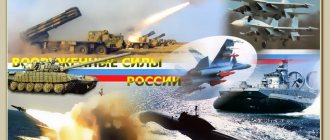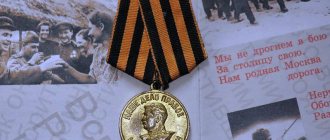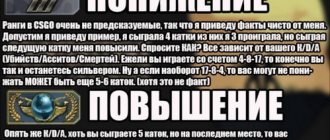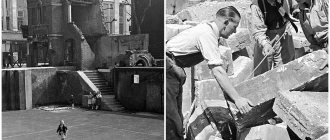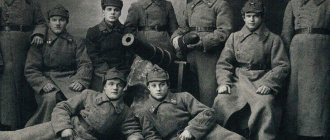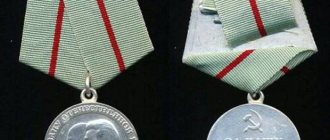Education SS and SD
In 1923, a small detachment of Schutzstaffeln (SS) was allocated from the party assault troops to serve as the personal bodyguards of the leader A. Hitler. Since 1929, on their basis, under the leadership of Heinrich Himler, units began to be deployed, whose task was to protect the entire top Nazi leadership.
In 1931, SS leader Himler created one of the oldest SS security organizations, the intelligence service, which in the summer of 1932 was renamed SicherheitsDienst (SD). The name SD is a translation of the abbreviation SD, from German - Security Service.
SD
SD, Security Service of the Reichsführer-SS (SD, Sicherheitsdienst des Reichsführers-SS), intelligence service in Germany in 1931–1945. Founded on October 5, 1931 as the secret service of the National Socialist German Workers' Party (NSDAP) and the security detachments controlled by it (see SS). It was headed until 1942 by R. Heydrich, in 1943–45 by E. Kaltenbrunner. The initial task of the SD was to monitor politics. opponents of the NSDAP and members of the party itself. After the Nazis came to power in Jan. 1933 SD actually duplicated the work of the Security Police (ZiPo; Sicherheitspolizei, SiPo) and the Gestapo, as part of the SS in the summer of 1934 it played an important role in the liquidation of the SA leadership led by E. Röhm (see “Night of the Long Knives”). Subsequently, the functions of the SD and the Gestapo were clearly differentiated: the SD was entrusted with the functions of an intelligence and counterintelligence agency, as well as information. (intelligence) services (Nachrichtendienst) of the NSDAP. In 1935, the SD was divided into the General SD (Allgemeine SD), whose staff included many. ZiPo employees, and the Information SD (Nachrichten-SD), which controlled the population. In the structure of the latter, which had approx. 6.5 thousand full-time employees and St. 30 thousand secret agents, there were 52 areas (Abschnitte), which united 519 “external centers” (Außenstellen). Within the framework of the Information SD, a division called Zagranitsa-SD (Auslands-SD), which competed with the army Abwehr, was created, which was engaged in reconnaissance, disinformation, sabotage and terrorism. activities abroad, provided support to pro-fascist and nationalist. elements. He prepared and carried out an operation to imitate a Polish attack on August 31, 1939. attacks on Germany radio station in Gleiwitz (now Gliwice, Poland), which gave Germany a pretext for attacking Poland (see German-Polish War of 1939). As a result of the subordination of the SD and ZiPo to a single leadership on September 27, 1939, the Main Imperial Security Directorate (RSHA) arose. In the territories occupied by Nazi Germany during the Second World War, special forces operated under the leadership of the SD. SS and police units involved in the extermination of Jews, communists, partisans and underground fighters. After the failure of the plot on July 20, 1944, the Abwehr was transferred to the control of the SD. At the Nuremberg trials of 1945–49, the SD was recognized as a criminal organization. After 1945 SD employees and agents were recruited to work in the emerging West Germany. intelligence service, intelligence and counterintelligence. organs of other countries states
First stage
The junior naval officer Reichard Heyderich was appointed to lead the newly formed special service, which was directly subordinate to Himler. At the first stage, the main functions of the SD are monitoring the purity within the party and preventing the penetration of hostile and alien elements into the party ranks. Initially, the organization occupied a small office and served as an auxiliary police force for the Nazi Party. Gradually, the organization's role grew as a "watchdog" over members of the SS, and after 1934, when Hitler became chancellor, over the party. The SD and SS in Germany played a decisive role in the consolidation of police functions in the party security structures.
Sicherheitsdienst
In August 1931, Himmler formed the intelligence department “1C” in the security detachments (SS). SS Sturmführer Reinhard Heydrich
. He was 27 years old. By the end of the year, he was gradually awarded three titles. In December 1931, Heydrich became Obersturmbannführer of the SS. Heydrich spied on political opponents, Jews, as well as ordinary citizens who could be useful to the party or the SS. Heydrich created a file index of everyone the department was monitoring. The card index was divided into categories: Jews, communists, Catholics, aristocrats, freemasons and national socialists with a “dark past.” For those who fell into several categories at once, a special box was allocated.
Chief of the Security Service (SD), SS Brigadeführer Reinhard Heydrich in 1934.
In 1932, the 1C department was reorganized and expanded into the security service of the Reichsführer SS
(Sicherheitsdienst des RfSS, SD RfSS). On June 9, 1934, all party bodies that were involved in intelligence and counterintelligence were included in the SD. Rudolf Hess, who was second in the NSDAP, issued a decree that the Security Service (SD) was the only intelligence service of the party.
Structure and functions
The security service received powerful development after the Nazis took over the country. Hitler, not trusting the state security forces, began to transfer their functions of external and internal security to the SS and SD. In 1939, the organization was transferred to the jurisdiction of the Main Directorate of Imperial Security. Heydrich became the head of the SD and the security police, which included the Gestapo.
The security service was divided into internal, which was responsible for counterintelligence, analysis of the internal political situation, the fight against political opponents and repressions against the population, and external, which was responsible for espionage and covert operations. Internal security was led by Otto Ohlendorf, foreign intelligence by Walter Schelenberg. SD is an independent special service that was more involved in collecting information (political investigation) and analyzing it.
As Himler explained, the SD is engaged in general preparatory work, including research, preparation of materials, examination and analysis at the level of parties and movements, identifying trends, directions of development and revealing spheres of influence and influence. And based on these materials, the Gestapo is already engaged in specific cases.
Einsatzgruppen Security Police and SD
See also: The Holocaust on the territory of the USSR
The four Einsatzgruppen were assembled at the beginning of June 1941 in Bad Düben to follow the eastern group of troops after the start of Operation Barbarossa to carry out their tasks or, as Heinz Höhne put it: “ 3,000 men were hunting 5 million Jews in Russia.” (“Der Orden unter dem Totenkopf”
p. 330). Of these five million, four million lived in the regions of the USSR captured by the Wehrmacht.
The masses of Soviet Jews were taken by surprise by the clearly organized actions of the Einsatzgruppen.
In the initial phase, the Einsatzgruppen tried to provoke “spontaneous” pogroms, using the anti-Jewish sentiments of part of the population, especially in the Baltic countries, for their own purposes, thus placing responsibility for what happened on the local population, as well as making their task easier. Large pogroms took place in Riga and Lvov.
Subsequently, the Einsatz and Sonderkommandos acted independently. After the capture of a city with a Jewish population by German troops, Jews were ordered to move to a specially created ghetto. On the day appointed for the massacre, they were ordered to gather in the central square or in some building. From there, as a rule, under the pretext of relocation or being sent to work, they headed to the place of execution. After rumors spread about their fate, Jews began to be taken by force directly from their homes. At the same time, villages and separate parts of cities were cordoned off by Wehrmacht units and searched house by house.
The methods of capturing victims and executing them differed in individual parts only in details. Quote from the verdict of the Munich District Court of July 21, 1961 in the case of Otto Bradfisch:
“In pursuance of the order for the extermination of the eastern Jewish population, as well as other groups considered as racially inferior, population groups and functionaries of the Russian Communist Party, after crossing the demarcation line established in 1939 between the German Reich and the Soviet Union, Einsatzkommando 8 carried out executions, during which they were killed by the main way of the Jews. […] The capture of Jews in occupied settlements—in the lexicon of the time referred to as “correction”—proceeded as follows: part of the territory of a settlement was cordoned off by members of the Einsatzkommando, and then other Einsatzkommando employees indiscriminately expelled the victims from their houses and apartments. Immediately after capture, victims were transported by truck to pre-prepared execution sites or to prepared buildings (schools, factories) or other places where they were held until execution the next day or several days later. Already during these so-called “combing actions,” bodily harm was inflicted and in some cases murders were committed of sick and old people who could not walk and, as a result, were shot in their homes or in the immediate vicinity of them.
“Mass executions then took place outside the “corrected” settlement, and the place of execution was natural depressions, abandoned infantry or artillery positions, or, above all, anti-tank ditches or mass graves dug by the victims themselves. In the executions that took place in the first weeks of the war with Russia, only men between the ages of 18 and 65 were killed, while women and children were apparently still spared.
However, at the latest in August 1941 - already during the executions in Minsk - they switched to killing men and women of all ages, as well as children. After the preparations were completed, the victims, who were waiting after unloading from the trucks for further events near the execution grave, sitting on the ground, were led to the grave by members of Einsatzkommando 8 or driven to it with sticks along corridors formed from the team members. After they handed over their valuables and well-preserved clothing, if this had not already happened upon capture, they had to lie face down in the grave and were killed with a shot to the back of the head.
During the initial executions (Bialystok, Baranovichi, Minsk), and sometimes later during larger actions, teams of executioners were formed from employees of the Einsatzkommando and from assigned policemen, which corresponded in number to the group of people brought to the execution grave or, in some cases, were twice as large , so that one or two shooters must shoot one victim. These firing squads, armed with carbines, were composed mostly of policemen and were led by the platoon commander of the police unit attached to the Einsatzkommando. In executions carried out by these firing squads, sometimes the victims had to stand on the edge of the grave in order to fall into the grave after being shot.”
In Kyiv, over two days - September 29 and 30, 1941, when, according to official reports of special action units, 33,771 people, mainly Jews, were killed (see Babi Yar). In such cases, people were stripped naked in order to appropriate all their belongings and were forced to go into an earthen ditch and lie down on the bodies of already killed and still living wounded people. After this, they were shot with automatic weapons[12].
“In the spring of 1942, an order was received from Himmler to change the method of execution. From then on, they were transported to the ditches in trucks equipped with gas chambers. The cars were designed specifically for this purpose by two Berlin companies. From the outside it was impossible to determine what they were intended for. They looked like ordinary vans, but they were designed in such a way that when the engine was started, exhaust gases were supplied into a closed body, killing everyone who was there within ten to fifteen minutes,” testified during interrogation the commander of the special operations detachment of Group D, SS Gruppenführer (Lieutenant General ) Ohlendorf[12].
“Burying the dead in trucks with gas chambers was the most difficult test for the personnel of the special operations units,” Ohlendorf complained[12].
The designer of gas vans, Becker, testified during interrogation that “... the use of gas is not always carried out correctly. In order to complete the operation as quickly as possible, the driver presses the accelerator all the way. In this case, the persons to be killed die from suffocation, and not from gas poisoning, while falling into sleep... My recommendations have now confirmed that with the correct adjustment of the lever, death occurs faster and the prisoners fall asleep in a peaceful sleep. There are no faces and excrement distorted in horror, as was the case before”[12].
In August 1942, the German occupiers shot and killed in other ways about 27 thousand residents of Rostov-on-Don. The report of Reichsführer Himmler states that in Russia during the period from August to October of 1942 alone, 363,211 Jews were liquidated.
In the first winter of the war, the Einsatzgruppen killed about half a million people. Einsatzgruppe "A" killed almost a quarter of a million people, "B" - about 45,500 people, "C" - 95,000, "D" - 92,000. The Einsatzkommandos were followed by police and volunteers from among the inhabitants of the occupied territories to deal with everyone, who managed to escape the Einsatz command.
German Einsatzgruppe A report map showing Estonia as a "Judenfrei"
The executions of the population were accompanied by general confiscations. Everything that could be used in any way was confiscated: shoes, leather goods, clothing, jewelry, gold, valuables. Otto Ohlendorf, commander of Einsatzgruppe D, said that the extermination of Jews always began, if time permitted, with their forced registration with the police. When they were collected to be taken to execution, all their clothes and belongings were confiscated and handed over to the security service for forwarding to the Reich Ministry of Finance.
The Einsatzgruppen were also involved in the fight against partisans. Himmler did his best to emphasize the “true” nature of the Einsatzgruppen, explaining that they were doing an important job protecting the rear from partisan raids.
The exact number of victims of the Einsatzgruppen is unknown, but on the territory of the USSR alone, about 750,000 people were killed by four operational groups. In total, special action units, according to the calculations of the head of the Gestapo department for Jewish affairs, Adolf Otto Eichmann, killed 2 million people in the East, almost only Jews [12]
Colonel Pokrovsky: How many were executed using these cars?
Ohlendorf: I cannot give an exact figure, but comparatively it was very little, approximately a few hundred.
Colonel Pokrovsky: You said that mainly women and children were executed in these machines. For what reasons?
Ohlendorf: There was a categorical order from Himmler on this matter. Women and children, according to this order, had to be killed in this way in order to avoid unnecessary emotional unrest that arose in connection with other types of execution. It also made it possible for men who were themselves married to avoid shooting women and children.
Colonel Pokrovsky: Did anyone observe the behavior of those executed in these cars?
Ohlendorf: Yes, doctors.
General Nikitchenko: For what reasons were children exterminated?
Ohlendorf: There was an order that the Jewish population should be completely exterminated.
General Nikitchenko: Including children?
Ohlendorf: Yes.
General Nikitchenko: Were only Jewish children exterminated?
Ohlendorf: Yes.
General Nikitchenko: Were the children of those whom you classified as commissars also destroyed?
Ohlendorf: I don't know that the commissioner's family was ever searched for.
- Ohlendorf's testimony at the Nuremberg trials[13]
In occupied Pskov, recruitment into well-paid anti-partisan units was carried out through advertisements, for example, through the collaborationist newspaper “For the Motherland”[14].
Number of victims
By the end of 1941, the Einsatzgruppen reported the following indicators:
- Group A: 249,420 Jews killed
- Group B: 45,467 Jews killed
- Group C: 95,000 Jews killed
- Group D: 92,000 Jews killed
Thus, the total number of Jews killed by the Einsatzgruppen by the end of 1941 was about 500 thousand people. At the same time, Einsatzgruppe A attempted to be the first of the Einsatzgruppen to achieve the complete extermination of Jews in its area of responsibility.
The first wave of murders, after some intermediate phase, gave way to the second, which began around the autumn of 1941. This time the actions of the Einsatzgruppen were supported by Wehrmacht personnel. The Einsatzgruppen were subordinated to the high command and the police, the leaders of the Einsatzgruppen were appointed commanders in the security police.
The second stage was aimed at the complete destruction of the Jews remaining in the occupied area and was, due to the experience gained earlier, as well as increased support, more effective. Along with improved organization, the Einsatzgruppen was reinforced by teams of collaborators from the local population, the so-called “Schutzmannschaft” (abbreviated noise), the total number of which, according to the report of the end of 1942, was 47,974 people. In addition, assistance was provided by the so-called “anti-gang units” (German: Bandenkampfverbände), with personnel at the end of 1942 of 14,953 Germans and 238,105 “Eastern assistants” (German: Ost-Hilfswilligen (Hiwis)). The chief of the “anti-gang units”, the head of the SS and police of Army Group Center, SS Gruppenführer Erich von Bach-Zelewski could form executive groups of Wehrmacht, SS and police personnel for certain actions, which were then considered “anti-gang units” and They shot all the Jews who fled into the forests as partisans. This is clearly seen in the results of Operation Swamp Fever in February/March 1942. 389 partisans, 1,774 suspects and 8,350 Jews were shot.
The number of victims of this second phase amounts to 400 thousand, bringing the total number of Jewish victims as a result of mobile extermination actions to 900,000. Together with the massacres carried out by the Einsatzgruppen, the “anti-gang units”, as well as the German and Romanian armies, the number of victims of mobile extermination actions The extermination of Jews in the Soviet Union amounted to about 1 million 350 thousand people.
Destruction of traces
By the end of the second stage, the problem of eliminating traces became increasingly urgent. Everywhere, only lightly buried mountains of corpses testified to the activities of the Einsatzgruppen. During the process of decomposition, the corpses swelled and climbed to the surface. In June 1942, Himmler gave the order to cover up traces of the executions and entrusted this to the commander of Sonderkommando 4a, SS Standartenführer Paul Blobel. A special Sonderkommando 1005 was formed, whose task was to open mass graves and burn the corpses. However, the task was only partially completed before the Red Army finally captured the areas affected by the Einsatzgruppen in 1944.
Crimes
The SS and SD are the two main criminal organizations responsible for carrying out policies to combat opponents of the Nazi regime and racial ideology. They especially distinguished themselves in the destruction of representatives of “inferior and inferior” races, and above all Jews. All anti-Jewish actions from the moment Hitler came to power were entrusted to these departments under the leadership of Himmler.
Since 1933, the SS and SD controlled the processes of expulsion of Jews from political, economic and all spheres of life. They enforced Nazi laws that deprived Jews of basic human rights.
One of the most high-profile actions of the SD was the organization of Kristallnacht on November 9-10, 1938. Heydrich's office organized an assassination attempt by a Jew on a German diplomat. In response, “spontaneous pogroms” of Jewish organizations and synagogues followed.


